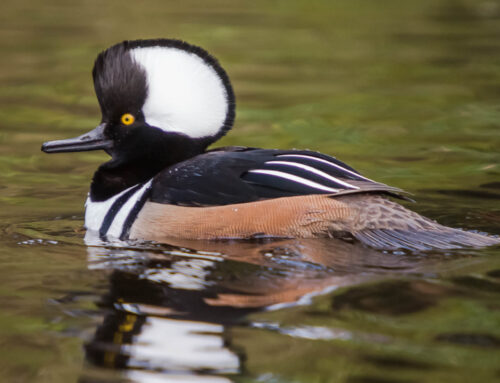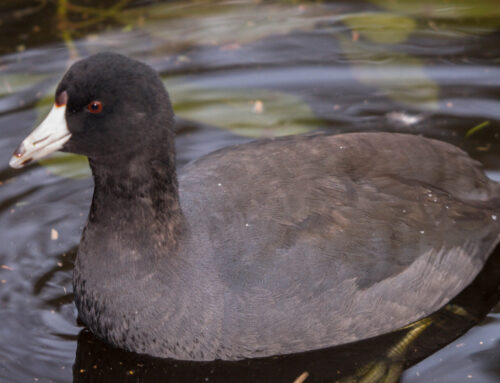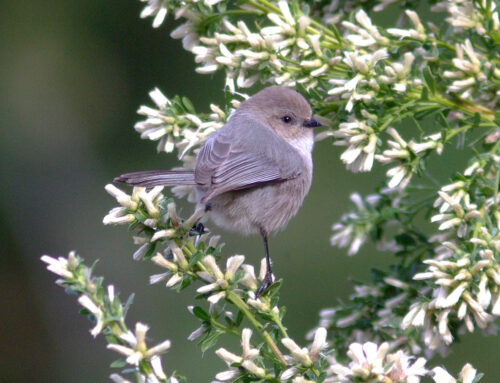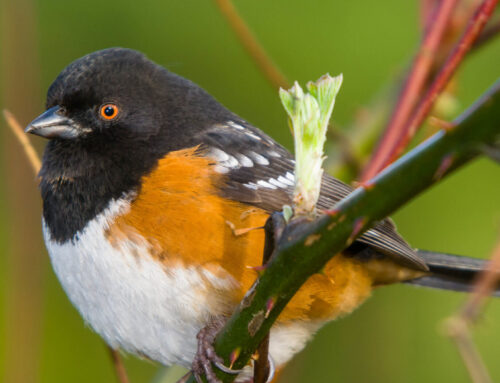Common Name
Barrow’s Goldeneye
Species Name
Bucephala islandica

Photo by Frank Lin

©2012 Liron Gertsman

Photo by Frank Lin
Appearance
40-51 cm length | 77-83 cm wingspan | 600-1300 g weight
A medium sized diving duck with a relatively large head. Very similar in appearance to the Common goldeneye, the male has a black back with white spots patterned like piano keys, an iridescent bluish-purple head with a large, crescent-shaped white cheek spot, black bill and golden-yellow eyes. Their belly and flanks are white with diagonal black stripes. Feet and legs are orange. The female is greyish instead of black with a brown head and an orange bill through winter.
Habitat / Behaviour
Carnivore | Wetlands, rivers, lakes, coasts, ponds | Migratory (wintering in Vancouver)
Inhabits ponds, lakes and rivers of boreal forests, breeds in alkaline or acidic lakes, and can otherwise be found in sheltered coastal bays during migration and through winter. BC supports 60% of the world’s population of the species, and the English Bay – Burrard Inlet – Howe Sound Important Bird and Biodiversity Area (IBA) which includes the Stanley Park Seawall supports 1.5% of the global population. They mainly feed on aquatic invertebrates such as mussels, clams, polychaete worms and small fish. In winter, they gather in large flocks called “rafts” in saltwater bays where they forage by diving in sync. Their diet changes seasonally, shifting towards insects and plants on their breeding grounds. They prefer nesting in alkaline and acidic lakes where large fish are absent which minimizes food competition and predation of chicks.
Barrow’s Goldeneyes are generally silent but make a subtle whirring sound when taking flight. The female makes a crow-like low-pitched quack, while males make a soft grunting ka-KAA when displaying.
Breeding
Monogamous | Secondary cavity nester | 5-16 eggs | Lives up to 14 years
This cavity nesting duck makes use of the holes left by broken off branches or those made by large woodpeckers such as the pileated or black woodpecker. The male abandons the female within days of the start of incubation. Females are highly territorial and will chase away nearby females such that their brood of ducklings will need to join the family of the dominant female, sometimes resulting in a larger “creche” including ducklings other than her own. A behaviour called brood parasitism – where eggs are laid in the nests of other birds to trick the host parents into raising the brood parasite’s young – is common. It may occur between other goldeneyes as well as other types of birds such as grebes, loons and even starlings.






